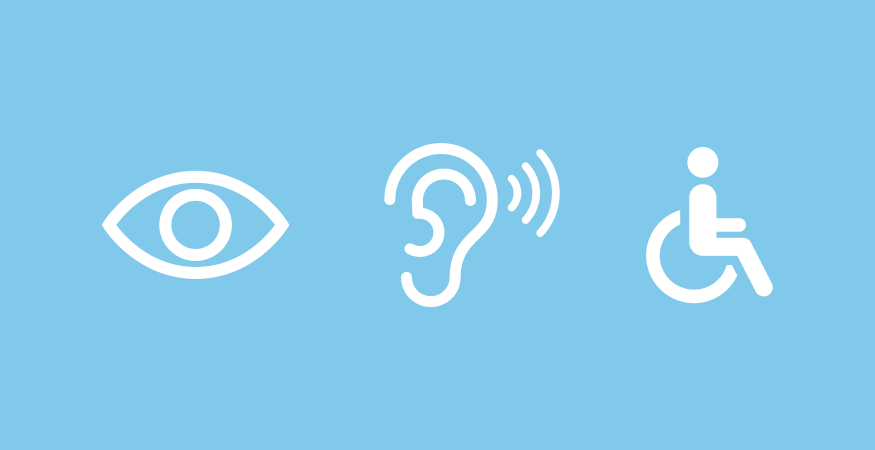Not all disabilities impede internet use, but, as a business owner, it’s a good idea to know how easy or difficult your website is for people with limited abilities. And once you know, incorporate updates into your next website update.
At C3D we can help you sift through the guidelines and design a site that’s accessible for almost everyone.
What is ADA Compliance?
In 1990, congress enacted The Americans with Disabilities Act (ADA) to help eliminate discrimination based on abilities. Originally it intended to regulate governmental agencies and organizations that receive Federal funding. This daunting and quite confusing piece of legislation fills 1000’s of pages and is broken into several sections (Titles).
The ADA Title III is the piece of legislation that loosely pertains to websites and digital media. Although the Title III doesn’t specifically reference websites, recent lawsuits have interpreted “places of public accommodation” to include websites
In a recent suit, Domino’s Pizza vs. Robles, the Supreme Court took the position that Robles, a blind man, could sue Domino’s Pizza because their website lacks the proper technology to enable him to communicate with the site. Depending on the outcome of this case, a significant and very clear precedence will be established for online merchants and businesses.
Issues to Look For
Since the web is not specifically mentioned in the ADA, and since online/digital access is implied, the way the law is interpreted is ever-changing. Every year new interpretations of the guidelines are published.
This is partially influenced by advancements in assistive technology but also in our increased awareness around accessibility.
The Web Content Accessibility Guidelines (WCAG) helps interpret and make sense of this complex and confusing legislation. It breaks down into 4 main areas of concern:
1. Operable Issues
Operable issues affects how a visitor navigates your website. Your website’s functions should all be able to be performed with keyboard-only commands.
2. Perceivable Issues
Perceivable issues impact the ability of a user to find and process information. Images should have captions and video should include audio descriptions. Without these, certain users may not be able to understand portions of your website.
3. Robust Issues
Robust issues address your site’s ability to continuously change to meet the needs of users with disabilities. Examples of robust requirements would be performing annual scans of your site to ensure leading screen readers can work on your site and making upgrades if needed.
4. Understandable Issues
These can be the most challenging as this pertains to the users ability to understand all information, navigation and content on your website. A good example is when an error message is displayed, include an explanation and directions to correct it.
Download our ADA Quick Reference Guide
Why have an ADA Complaint site?
Our roles as business and organization owners are to serve our customers. We’re doing a disservice to 41 million potential customers who may not be able to interact with your business if your site doesn’t accommodate a wide range of abilities.
Where to begin?
More lawsuits are being filed against companies not following ADA guidelines.
Even though there are no specific Federal statutes that say a site must be accessible and outlines how to make it accessible; the courts are seeing (and ruling in favor) more suits brought up against businesses for inaccessible sites.
Most of these lawsuits reference the Web Content Accessibility Guidelines (WCAG) as the benchmark for acceptable accessibility standards.
In order to achieve a Level AA (best) rating, several requirements must be met. For most businesses, meeting all Success Criteria is unrealistic, but that doesn’t mean you can’t strive to make your site more accessible.
We can help get your site on track
To help your business meet accessibility standards, we start by learning about your business and analyzing your current website. Based on your unique attributes, we prioritize the Success Criteria and provide recommendations that are relevant to your business needs and customers. Then, we work closely with you to create a site that strives for ADA Compliance.
You may be thinking, “But I will never have a completely compliant site.”
That is probably true.
The important thing is to start. By showing that you’re working towards ADA compliance, you can reduce your risk for a lawsuit. Any efforts made to make your website more accessible means more consumers have access to your business. It’s a ‘win-win’ scenario for you and the 41 million individuals with disabilities.

